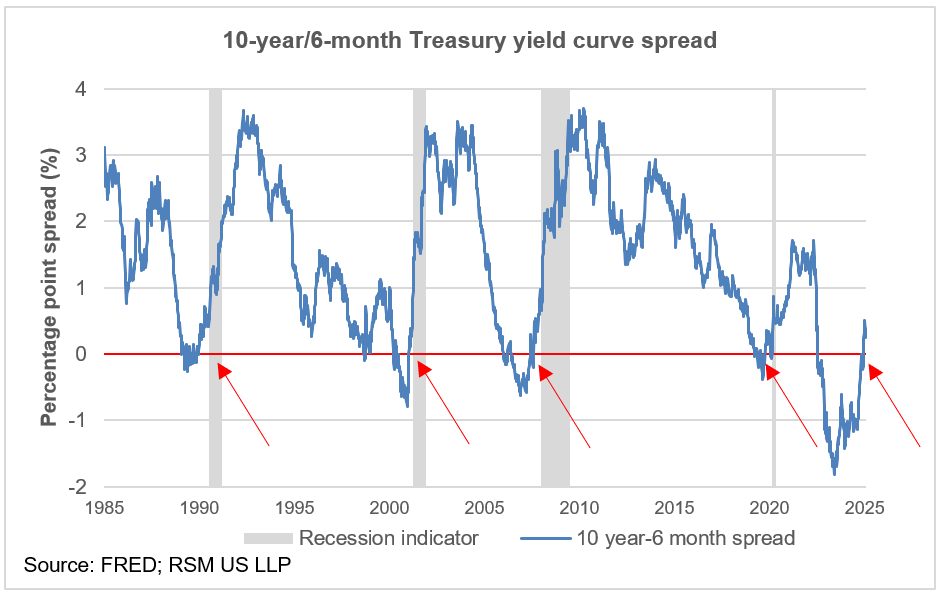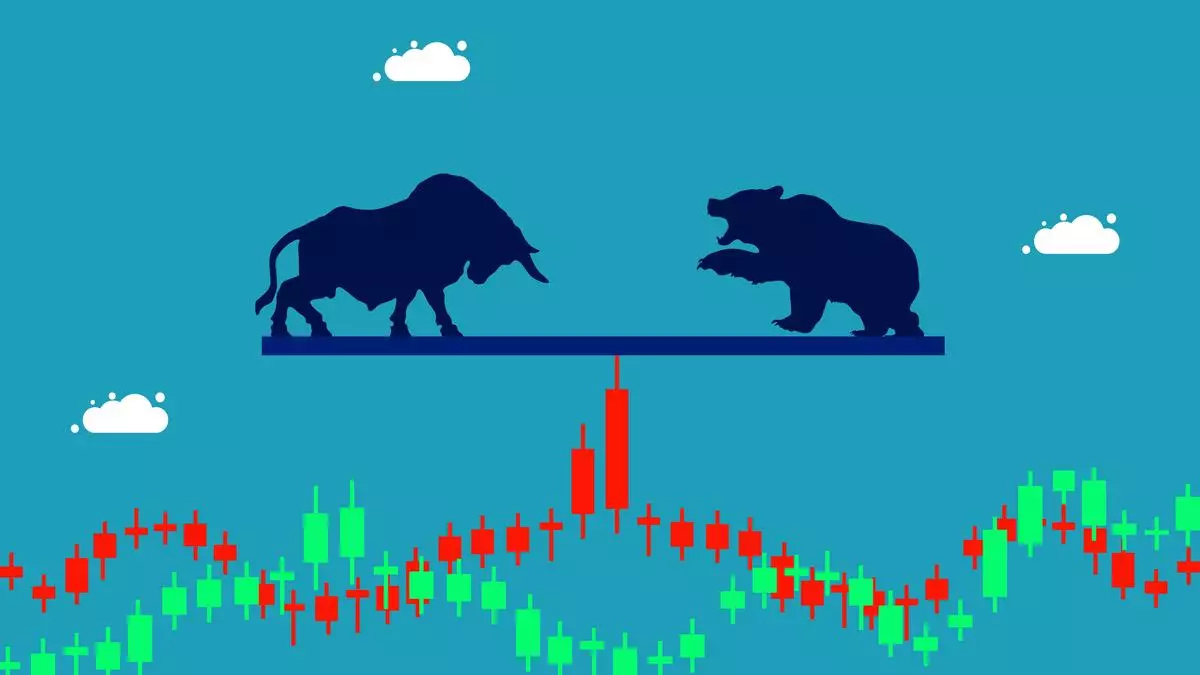








The U.S. economy is currently navigating a complex landscape characterized by both promising growth and significant challenges. A recent analysis from RSM US highlights a regime change in the economy, marked by scarce capital, insufficient aggregate supply, higher inflation, and rising interest rates. Despite these hurdles, the U.S. economy, valued at $27 trillion, is growing above trend, but its future hinges on achieving a productivity growth rate of 2.5% and increasing labor supply [8dbe5f5d].
UBS has predicted a 50% chance of a 'Roaring 20s' economic cycle in the U.S., citing current economic indicators that align with this scenario, including a GDP growth of 3% in the second quarter of 2024 and a Consumer Price Index (CPI) at 2.5% for August 2024 [aa3d6b95]. Jason Draho, head of asset allocation Americas at UBS, noted that the economy is meeting criteria for this potential boom, while Ed Yardeni, a market veteran, has expressed optimism about a new era of growth driven by technological advancements, particularly in artificial intelligence [aa3d6b95].
However, Ruchir Sharma, chair of Rockefeller International, warns of an impending economic bubble due to excessive U.S. debt. The U.S. public debt is nearing 100% of GDP, and it is expected to surpass post-World War II records. Servicing this debt costs approximately $1 trillion annually, which exceeds defense spending [bde65224]. Sharma highlights that $2 of new government debt is now required for every $1 of GDP growth, marking a 50% increase from five years ago. This alarming trend raises concerns about the sustainability of economic growth, as investors may soon demand higher interest rates, potentially stalling progress [bde65224].
A recent study from Smallcase further underscores these concerns, indicating that the U.S. economy may face recession risks due to rising debt and market imbalances. The debt-to-GDP ratio has reached a record 124%, and over $1 trillion was spent on public debt interest in 2023. Additionally, the S&P 500's price-to-earnings (P/E) ratio stands at a historically high 31.2, while credit card delinquencies have exceeded 4% for the first time since 2010 [8a95199f]. Ujjwal Kumar, a Smallcase Manager, emphasizes the importance of a balanced investment approach in light of these challenges [8a95199f].
Michael Roberts emphasizes that while the U.S. economy is performing better than Europe and Japan, it is historically underperforming compared to previous decades. The International Monetary Fund (IMF) predicts U.S. growth at 2.8% for the year, with GDP expanding by 11.4% since the end of 2019 [26198bf0]. Productivity growth in the U.S. has increased by 30% since the 2008-09 financial crisis, but this is relative to stagnation in other advanced economies, suggesting that the narrative of U.S. exceptionalism may be overstated [26198bf0].
In stark contrast, the global economic landscape reveals significant disparities. Major economies like Germany and China are struggling with growth, with Germany facing mass sackings in manufacturing and warnings of deindustrialization. Deutsche Bank's Robin Winkler noted that the downturn in Germany is the worst since World War II, with the growth forecast for 2025 slashed to near zero [bcbfce60]. Meanwhile, China's growth target of 5% is the lowest in over 30 years, and Japan's economy remains stagnant, now ranked fourth globally [bcbfce60].
Concerns about the sustainability of the current economic environment are echoed by the Federal Reserve, which warns of elevated valuation pressures in the stock market. Corporate bankruptcies in 2024 are projected to surpass those of 2020, indicating potential vulnerabilities in the economic landscape [81ad7b3b]. Sharma has characterized the U.S. stock market boom as 'the mother of all bubbles,' raising alarms about the potential for a bubble in AI investments [81ad7b3b].
Adding to the caution, Société Générale's Albert Edwards has warned that the current U.S. equity market optimism is unsustainable, likening it to past bubbles. He cites extreme euphoria, inverted yield curves, high price-to-earnings ratios, and concerns about the Chinese economy as significant warning signs. Edwards predicts that 2025 will not see the U.S. economic exceptionalism that many believe in, suggesting that the equity rally may end due to rising U.S. bond yields [c93b5b5e]. He describes himself as an 'uber bear' and emphasizes the tech sector's reliance on AI investments needing to deliver profits [c93b5b5e].
Despite the optimism surrounding the U.S. economy, analysts are wary of external factors such as rising unemployment and the potential for a recession. The Sahm Rule, which indicates recession risk, currently shows a reading of 0.57 percentage points [aa3d6b95]. Furthermore, while the stock market has had a strong performance recently, there are concerns about the reliance on credit cards for spending, which could impact consumer financial health as interest payments rise [aa3d6b95].
In a recent analysis, economist Elliot Eisenberg acknowledged that previous predictions of a recession did not materialize, attributing this to strong consumer spending, which accounts for 69% of economic activity. Despite interest rate hikes, consumer spending remains robust, bolstered by pandemic savings that peaked at $2.1 trillion in August 2021. Eisenberg noted that household net worth has increased by 50% over the past five years, although there are rising concerns about delinquencies in credit card and auto loans [696fd4f3].
Looking ahead, Eisenberg highlighted that the Trump administration's policies could significantly impact trade and immigration. From 2021 to 2024, 2.4 million immigrants entered the U.S. annually, with 60% crossing the border without authorization. Trump has proposed large-scale deportations and tariffs aimed at addressing trade deficits, although Eisenberg cautioned that these measures may not effectively resolve underlying economic issues. He emphasized that U.S. population growth has largely been driven by immigration, and any disruption from deportations could have significant economic ramifications [696fd4f3].
Moreover, a recent analysis by David Hebert underscores the differences in economic growth between the U.S. and the EU. In 2008, both economies had equal GDP, but by 2023, U.S. GDP had nearly doubled while the EU's barely grew. Factors such as Brexit, which caused the EU to lose its second-largest economy, the UK, are part of the story, but not the sole explanation for the $10 trillion GDP gap. Hebert cites Adam Smith's principles of 'peace, easy taxes, and a tolerable administration of justice' as key to U.S. economic growth. He notes that U.S. crime rates have fallen, and the country is not engaged in large-scale combat, while tax rates remain comparable to those in the EU [fd7cf375]. Only 7 of 27 EU countries score higher than the U.S. in legal system efficiency, indicating that the U.S. has advantages in peace, taxes, and justice administration [fd7cf375].
In a recent analysis by James Pethokoukis, the importance of immigration for economic growth is underscored, arguing that high-skill immigration reform is vital for maintaining economic dynamism. He notes that while the current U.S. GDP growth forecast is under 2%, down from over 3% post-war average, better policies and technology are necessary to improve growth [2972af09]. Pethokoukis highlights that significant growth began 200 years ago and that modern growth is sustained unlike previous periods, suggesting that the U.S. should not take economic growth for granted [2972af09].
In summary, while the U.S. economy shows promising signs that could lead to a new Roaring '20s or an economic supercycle, significant risks remain that could derail this potential growth. The contrasting economic conditions across the globe underscore the complexities of the current economic environment, leaving investors and policymakers to navigate a landscape fraught with uncertainty [aa3d6b95][81ad7b3b][bcbfce60][26198bf0][c93b5b5e][bde65224][8a95199f][696fd4f3][fd7cf375][2972af09][8dbe5f5d].